![]() In the last couple of days in Edinburgh, we’ve been treated to some rather spectacular sunsets.
In the last couple of days in Edinburgh, we’ve been treated to some rather spectacular sunsets.
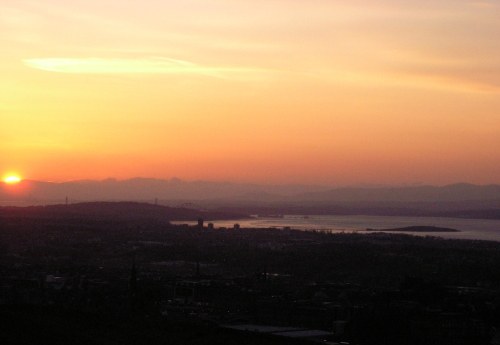

You could argue that in Scotland a clear sky is more unusual than a nice sunset, but it’s likely that the beauty of this one has been enhanced by the light-scattering effects of volcanic ash thrown up into the stratosphere by the sub-glacial eruption of Eyjafjallajoekull, and blown by the prevailing Atlantic winds across Northern Europe (those familar with Edinburgh may have noted the geological irony of my taking photos of the effects of an active volcano from an extinct one).

Source: NASA.
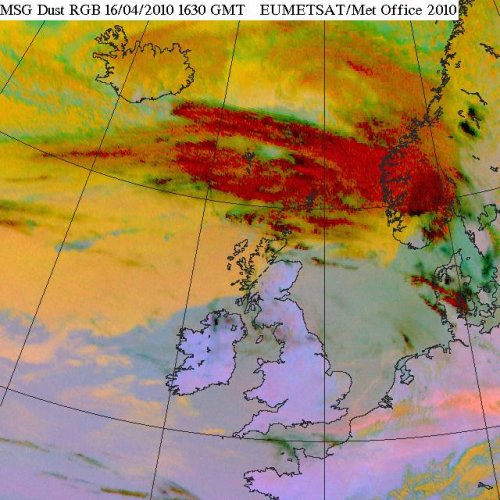
Source: UK Met Office, where a nice animation is also available.
All this volcanic material in the air may have a pleasing aesthetic effect, but as you’re no doubt aware, it doesn’t react too well with jet engines. For that reason most flights out of UK and northern European airports have been grounded for the past couple of days, and may stay grounded until at least tomorrow. It’s somewhat humbling how what is really only a fairly minor volcanic eruption can completely disrupt the life of an entire continent. On the other hand, it is doing wonders for our collective carbon footprint: the estimated amount of carbon dioxide that has been emitted by Eyjafjallajoekull is 30 times less than only three quarters (revised figure – thanks kai) of the amount not being emitted by all those grounded planes.
For more on the Eyjafjallajoekull eruption, both Eruptions and The Volcanism Blog are providing excellent ongoing coverage. You should also check out a post by my friend John Stevenson, an expert on sub-glacial eruptions. And if you want to see a few more photos of yesterday’s sunset in Edinburgh, click below the fold.

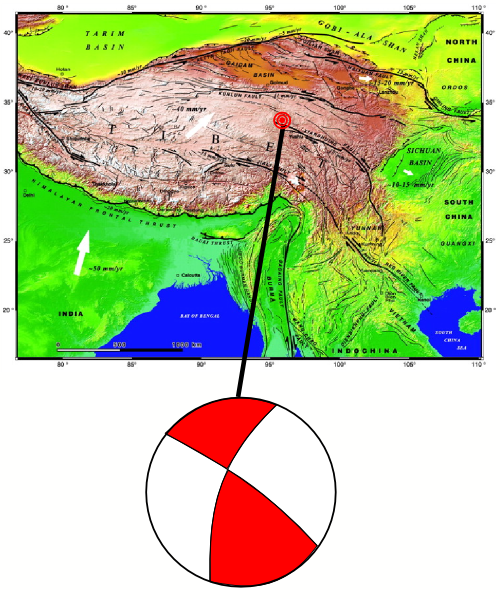





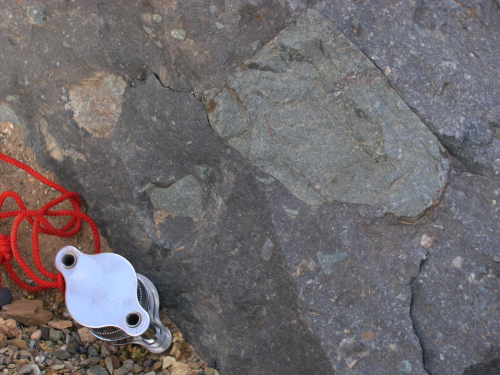

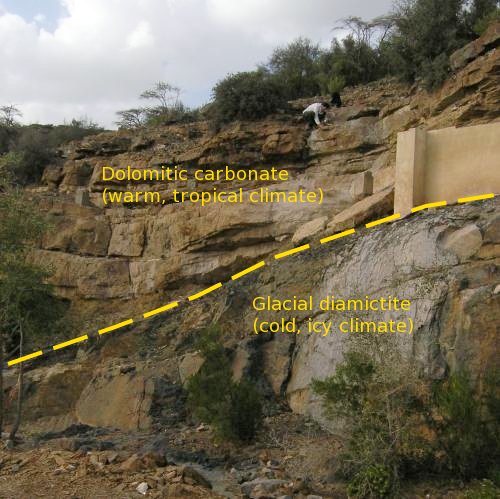


Nice plan for content warnings on Mastodon and the Fediverse. Now you need a Mastodon/Fediverse button on this blog.